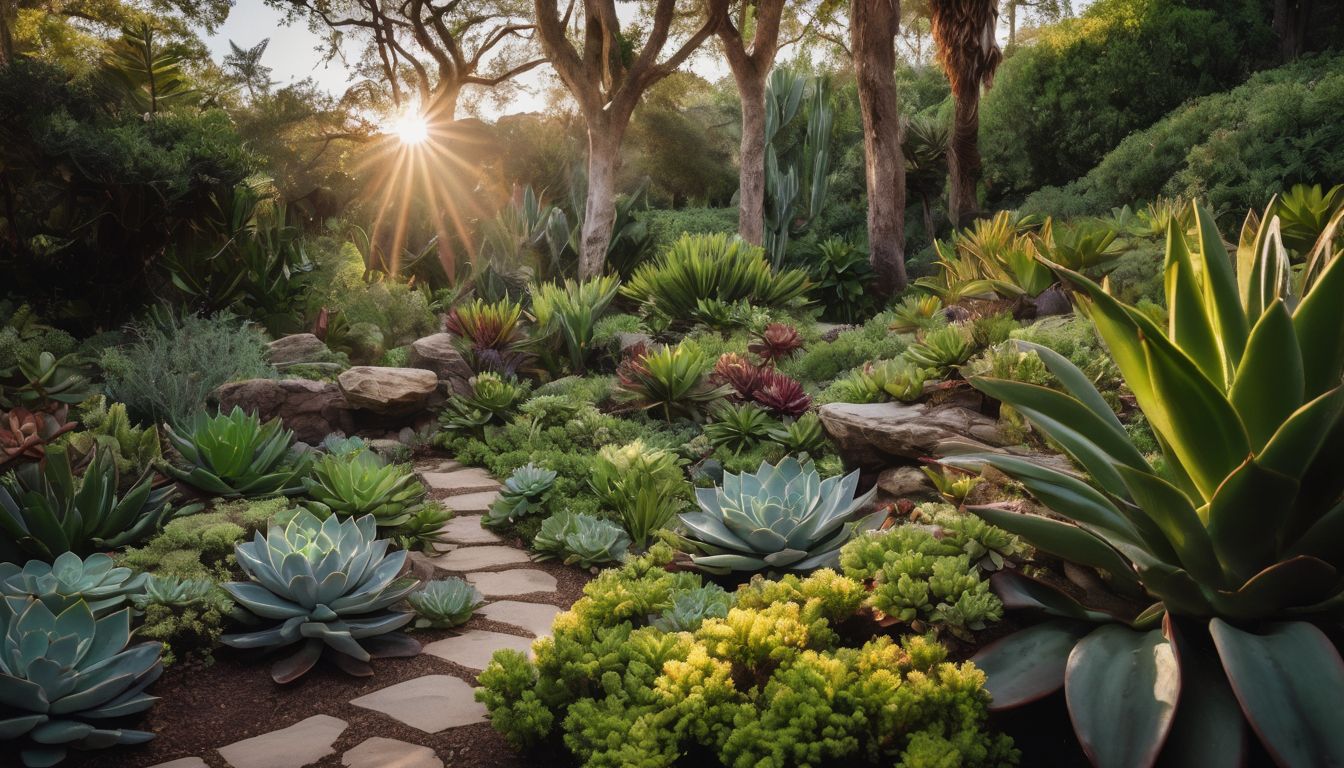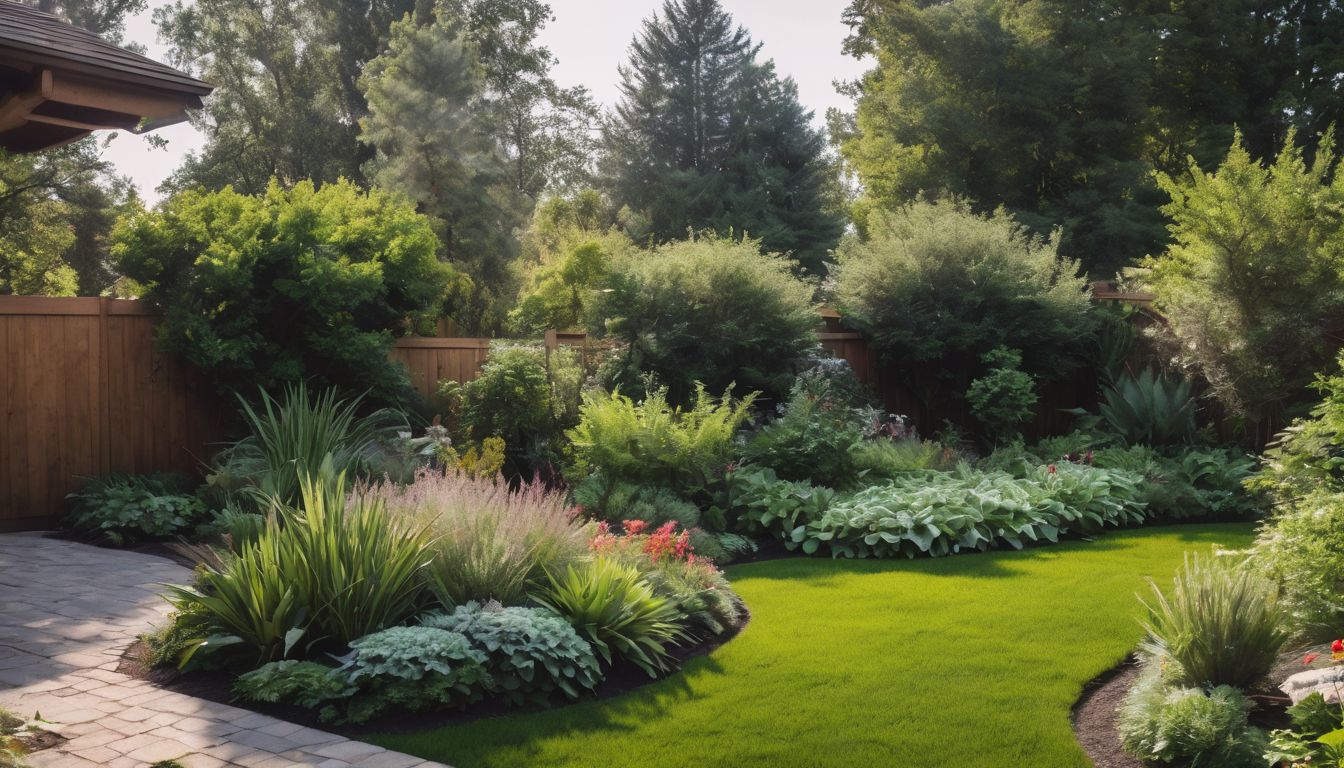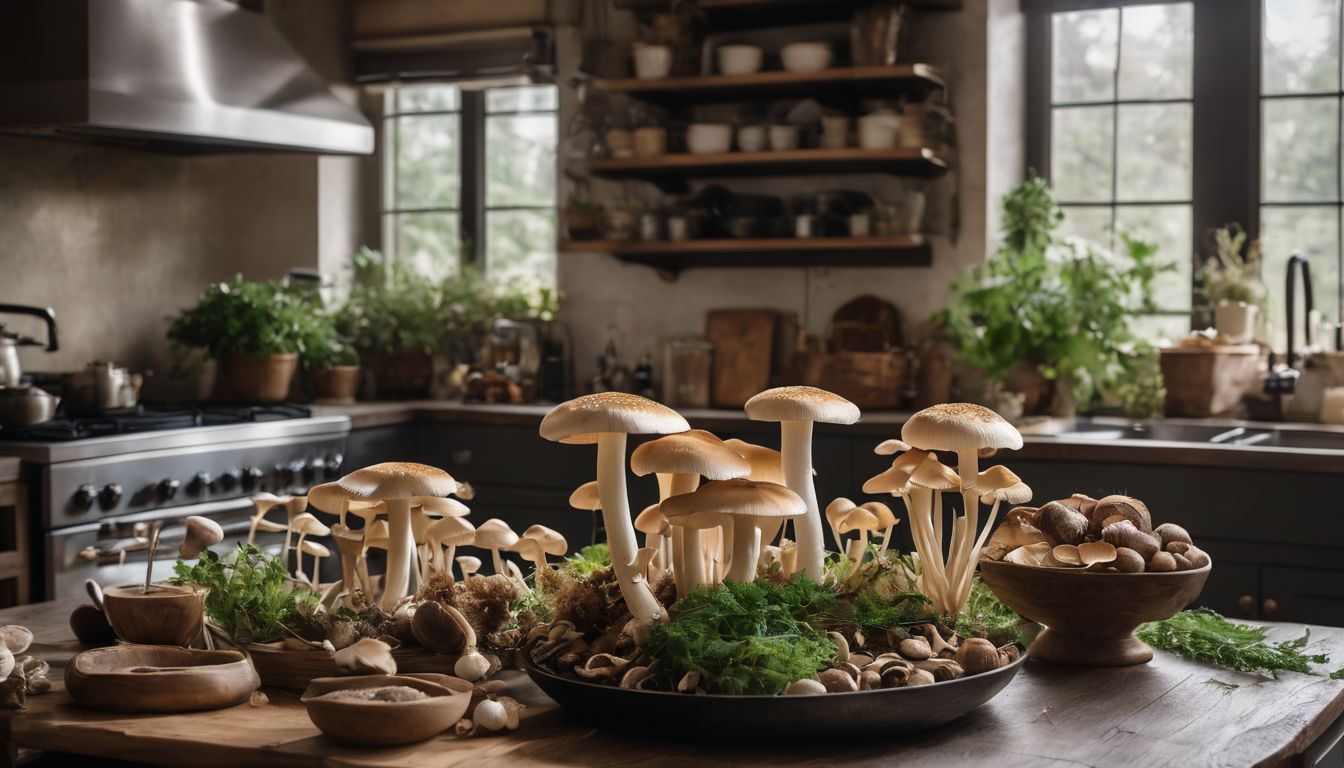Cramped spaces in city apartments make growing a garden seem impossible. Yet, research shows houseplants can improve air quality and boost your mood. This post unveils practical tips for transforming tiny corners into lush retreats, even without a balcony.
Discover the green thumb you never knew you had!
Key Takeaways
- Use vertical planters and hanging baskets to save space and grow plants upwards in small apartments.
- Select hardy, low – maintenance indoor plants like spider plants or snake plants, and herbs like basil for outdoor areas.
- Ensure containers have drainage holes and are made from lightweight materials such as plastic or fibreglass for rooftop gardening.
- Watering needs vary; consider self – watering pots for consistency, especially if you often forget to water your plants.
- Control the environment by using humidifiers indoors and windbreaks outdoors to protect your garden from harsh conditions.
Why Start an Apartment Garden?
Starting an apartment garden breathes life into your living space, bringing a slice of nature right to your doorstep. Small space gardening offers a refreshing oasis in urban areas where greenery is scarce, making it ideal for environmentally conscious individuals looking to reduce their carbon footprint.
An indoor garden purifies the air by absorbing toxins and emitting oxygen, creating a healthier environment within your home.
Creating a small green haven with container gardening provides mental well-being benefits too — tending to plants can be therapeutic and help alleviate stress. Urban gardening enthusiasts can grow fresh herbs and vegetables all year round, regardless of limited outdoor space or harsh weather conditions.
Apartment gardens are not only aesthetically pleasing but also practical; they encourage sustainable living by reducing the need for store-bought produce that often comes with excess packaging waste.
Considerations for Apartment Gardening
When gardening in a small apartment, it is important to consider the limited space and sunlight available for your plants. Choosing the best plants for indoor and outdoor gardens is crucial for success.
Space & Sunlight
Choose plants that thrive in the available sunlight. Ensure they have enough space to grow and flourish, keeping in mind their mature size. Optimise natural light by placing plants near windows or using reflective surfaces to direct light into darker corners, ensuring all plants receive adequate sunlight.
Maximise your flat’s limited space for gardening by utilising vertical planters, hanging baskets, and wall-mounted containers; these options can expand your garden while saving floor space.
Consider creative solutions like a tiered shelving system or a rolling trolley with multiple levels to accommodate more plants without cluttering your living area.
Best Plants for Indoor & Outdoor Gardens
Selecting the best plants for indoor and outdoor gardens is essential for successful flat gardening. Consider low-maintenance options such as snake plants, pothos, and spider plants for indoor spaces. These plants are resilient and thrive in various light conditions, making them perfect for flat living.
How to Care for Your Indoor Apartment Garden
When caring for your indoor apartment garden, it’s important to choose the right containers and provide adequate watering and soil. You’ll also need to control humidity and protect your plants from strong winds.
Choosing Containers
When choosing containers for apartment gardening, consider the following factors:
- Size and Depth: Select containers that are large enough to allow plants to grow and have sufficient depth for root development.
- Drainage Holes: Ensure that containers have adequate drainage holes to prevent waterlogging, which can lead to root rot.
- Material: Opt for lightweight yet durable materials such as plastic, fibreglass, or resin for easy manoeuvrability while maintaining sturdiness.
- Potting Mix: Use a high-quality potting mix designed for container gardening to provide adequate nutrients and moisture retention.
- Self-Watering Containers: Consider self-watering containers to regulate moisture levels and reduce watering frequency.
Watering & Soil
When selecting containers for your apartment garden, consider the watering and soil needs of your plants. Here are some tips to help you maintain a healthy indoor or outdoor garden:
- Choose containers with drainage holes to prevent waterlogging and promote healthy root growth.
- Use a high-quality potting mix that is well-draining and rich in nutrients to support plant growth.
- Water your plants consistently, keeping an eye on the moisture level of the soil to avoid over or under-watering.
- Consider using self-watering containers or water-absorbent crystals to help regulate moisture levels in your containers.
- Mulch the surface of your soil with organic materials such as compost or straw to help retain moisture and suppress weed growth.
Humidity & Wind Control
After addressing the importance of watering and soil quality, understanding humidity and wind control is crucial for maintaining a healthy apartment garden. Here are some key tips to consider:
- Opt for a humidifier to regulate moisture levels in indoor gardens, particularly during dry weather. This will help maintain optimal conditions for plant growth.
- Install a small fan or gently stir the air around outdoor garden areas to prevent stagnant air and promote healthy airflow.
- For rooftop gardens, use windbreaks such as trellises or tall plants to shield delicate plants from strong winds.
- Grouping plants together can create microclimates that offer protection against harsh winds, fostering a more favorable growing environment.
- Consider using shade cloths or movable lattices to protect plants from excessive sunlight and wind exposure.
- Regularly monitor humidity levels with a hygrometer, especially for indoor gardens, making adjustments as necessary to create an ideal environment for plant growth.
- Implementing these strategies can help mitigate the negative effects of fluctuating humidity and strong winds on apartment gardens, promoting successful cultivation in limited spaces.
Tips for Outdoor Apartment Gardening
Choose containers suitable for rooftop gardens, plant vegetables and herbs that thrive in limited space, and ensure proper care with regular watering and sunlight exposure. Discover more tips for apartment gardening by reading the full blog post!
Choosing Containers for Rooftop Gardens
- Opt for containers with adequate drainage holes to prevent waterlogging and ensure proper root aeration.
- Use raised beds or window boxes for growing vegetables and herbs, as they provide depth for roots and ample space for growth.
- Consider vertical planters to maximise space and create a lush green wall effect while conserving floor space.
- Utilise hanging baskets for cascading plants, adding visual interest to your rooftop oasis.
Best Plants for Rooftop Gardening
Rooftop gardens require plants that can thrive in containers and withstand exposure to wind and sun. Here are some suitable options for rooftop gardening:
- Succulents: These water-efficient plants come in a variety of colours, shapes, and sizes, making them ideal for rooftop gardens.
- Herbs: Basil, thyme, and rosemary are excellent choices as they require minimal space and add fragrance to your garden.
- Dwarf fruit trees: Consider citrus or apple trees that can be grown in larger containers and produce fruit in a compact space.
- Ornamental grasses: These low-maintenance plants add texture and movement to rooftop gardens while being drought-tolerant.
- Perennials: Plants like lavender, sedum, or yarrow are hardy choices that can withstand the harsh conditions of rooftop environments.
Essential Garden Care
After choosing the best plants for your rooftop garden, it’s essential to focus on the care needed to ensure healthy growth. Here are essential tips for taking care of your apartment garden:
- Ensure proper watering: Regularly check the moisture level of the soil and water as needed. Adjust watering frequency based on plant type and environmental conditions.
- Provide adequate sunlight: Position your containers to receive sufficient sunlight based on the requirements of specific plants. Consider using reflective materials to maximise light exposure.
- Maintain soil health: Use high-quality potting mix and consider adding organic compost to replenish nutrients. Monitor soil pH levels and adjust as necessary for optimal plant growth.
- Protect from pests: Regularly inspect plants for signs of pests and diseases, and take appropriate measures such as using natural pest control methods or introducing beneficial insects.
- Prune and groom plants: Regular pruning encourages healthy growth, improves air circulation, and prevents overcrowding in containers.
- Support plant growth: Install stakes or trellises for climbing plants to provide structural support and optimise vertical space usage.
- Monitor weather conditions: Be prepared to protect your garden from extreme weather events by providing shelter or adjusting container placement as needed.
- Maintain a clean environment: Remove debris, fallen leaves, and dead plant material regularly to prevent disease spread and maintain a tidy appearance.
- Observe plant health: Keep an eye out for any signs of stress or nutrient deficiencies in your plants, and take prompt action to address any issues that may arise.
Conclusion
In conclusion, apartment gardening offers a rewarding way to connect with nature in small living spaces. By carefully selecting the right plants and containers, anyone can create a thriving indoor or outdoor garden.
With the right care and attention, even those without balconies or large windows can enjoy the benefits of apartment gardening. Embracing this sustainable and fulfilling hobby not only beautifies your space but also contributes positively to the environment.
Get started with these tips for successful apartment gardening today!
FAQs
[Article 2 FAQs]:
1. What are some top tips for gardening in small apartments?
In small apartments, utilize vertical gardening to save space, grow herbs and vegetables on balconies or indoors, and consider an apartment gardening kit to start your urban farming journey.
2. Can I still garden if my apartment doesn’t have a balcony?
Absolutely! Indoor apartment vegetable gardening lets you raise plants inside your home with the right containers and houseplant care techniques, even without a balcony.
3. How can I begin herb gardening in my limited-space apartment?
Get started by choosing your favourite herbs, using pots that fit on windowsills or shelves, and ensuring they get plenty of sunlight for thriving indoor herb gardens.
4. Is it possible to compost when doing apartment gardening?
Yes! You can practice composting for gardening even in an apartment by using compact bins designed specifically for indoor use – perfect for small space living!
5. Are there special kits available for beginners interested in growing vegetables at home?
For those new to vegetable gardening in apartments, there are specialized apartment vegetable garden kits which provide all the essentials needed to cultivate fresh veggies at home.





